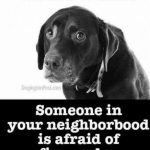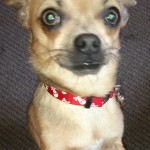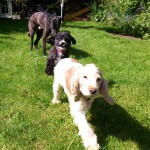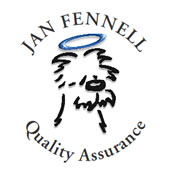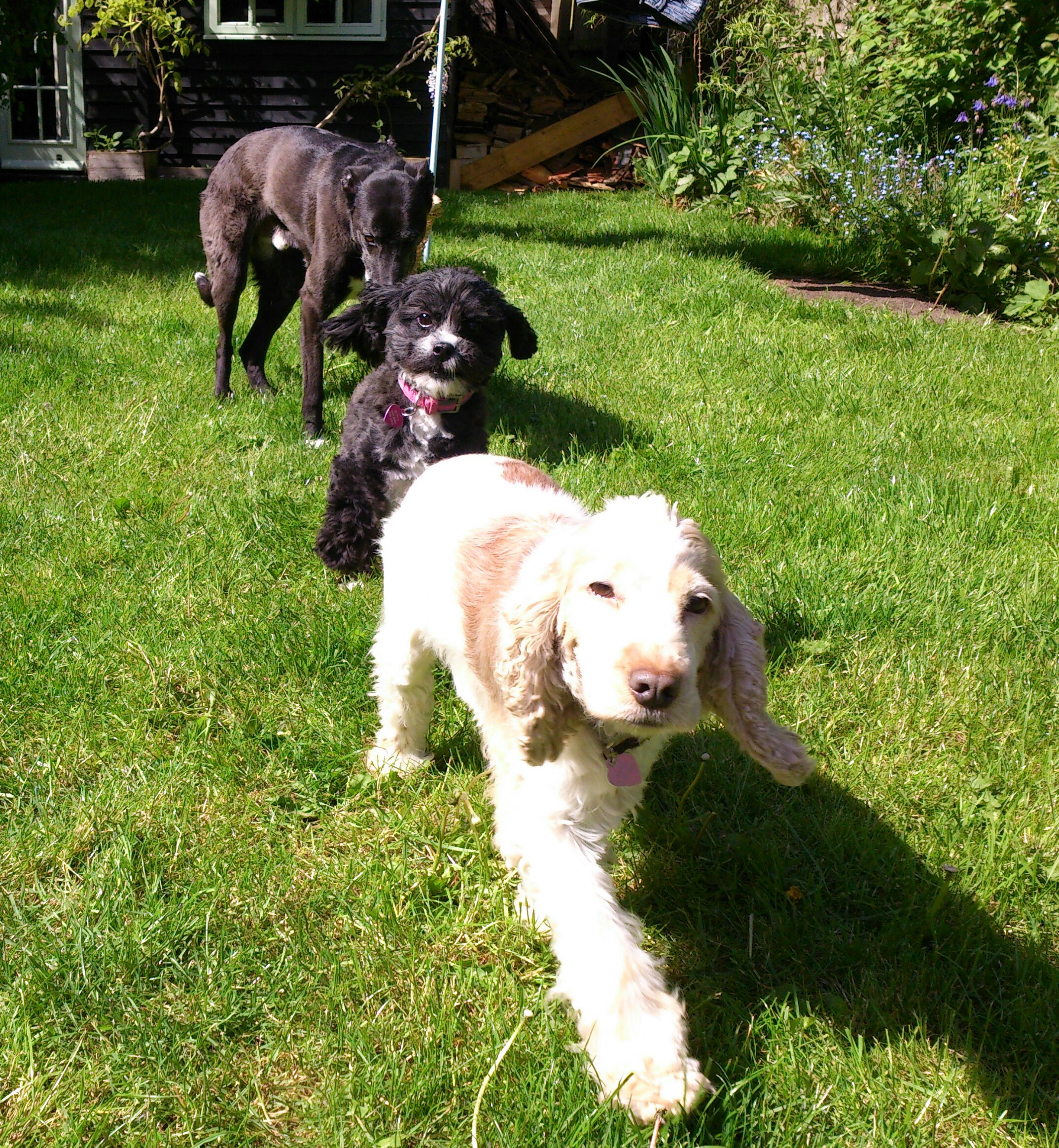
Daisy, Kitty and Eli walk with me around the garden, in preparation for heading out into the wider world, where I will continue to work on ‘dog walking to heel’ . . .
For many a dog owner, there is no greater joy, than heading out into the wider-world with their dog walking to heel! Dog Listening is all about gaining the chosen cooperation of your dog. There is no use of force, gadgets or gizmos. Heading out into the wider – more challenging – world is a process that begins in the home, with the calm and consistent implementation of leadership signals, in all of the four key areas of pack life.
It’s so much more fun walking with our dog, if our dog wants to walk with us too! It’s a joy to watch them running around off the lead but it’s essential that they come back when they’re called. It makes life so much easier for you and your dog, if he will walk nicely beside you – on or off the lead – when necessary.
I was asked to visit a lovely family and their 2 year old dog Bella – a big, exuberant Labrador. Bella had problems in all areas but in particular, taking her out for a walk – or a drag as the family referred to it – was a complete nightmare! Dad was the only member of the family able to hold Bella on the lead and he would return from the walk exhausted, frustrated and very fed-up. The family had tried taking Bella to dog training classes but to no avail.
I always begin my consultations by talking about the wolf pack and how leadership is consistently reinforced through the use of ritualised behaviour, specifically in the four key areas of pack life. Hierarchical living is a survival strategy – a very successful one that humans use too – and as I talked to the family about the wolf pack they began to see that Bella was far from the crazy, obstinate and disobedient dog, that they had all believed her to be.
After discussing the other three areas of pack life first, we moved onto the area that people often have the most problems with – dog walking to heel! I explained to the family that Bella was not ready to go out yet and that they needed to make her world small, safe and predictable whilst they gave her this all important information about leadership.
I showed the family how to gain Bella’s chosen cooperation by encouraging her to walk to heel around the house and garden – off the lead first – using training treats as an incentive and warmly praising calm cooperation. I explained the importance of going through doorways first and if Bella became over-excited and tried to control proceedings, I asked them to stop without saying anything and wait for her to settle, before beginning again.
Bella responded really well to this calm and positive approach and in no time at all was following individual members of the family around the house as requested. I explained to the family that the next step would be to put the lead on Bella and continue with this work around the house and garden.
By stopping, starting and changing direction the family began to show Bella that they made the decisions and decided where the pack went and over the following weeks and months they began to feel ‘happy and in control’ and were able to slowly head back out into the wider world and actually enjoy walking with their dog!



